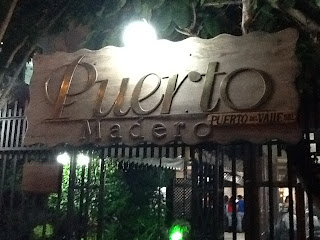Cochabamaba, Cliza show their culinary prowess
Cochabamba and Cliza, Bolivia
Bus travel in South America is almost always a horrendously painful ordeal. There. I’ve said it.
Bus travel in South America is almost always a horrendously painful ordeal. There. I’ve said it.
Now that that’s out of the way, our trip between La Paz and Cochabamba featured another 8+ hour ride on a bus that lacked a functional restroom.
After checking into our rooms at La Fontaine Oruro Hotel – located at Calle Hamiraya entre Colombia y Av. Heroinas – we went out to dinner at Puerto Madero – located in Cochabomba, Bolivia at Av Villarroel #1126 entre Uyuni y pasaje Estrada.
For 75 bolivianos per person, you can taste a mixture of traditional Bolivian dishes alongside dishes inspired by other cultures around the globe. Seafood, pasta, steak and dessert stations are set up around the restaurant where chefs cook plates for you to order and it is customary to tip the chefs a couple of bolivianos for the made-to-order plates.
Among the more local-style dishes, I enjoyed the fried plantains, batter-fried bananas, steamed corn, potato cakes and the reconstituted peach from a fresco de durazaro. While looking remarkably like a frighteningly shriveled, brown testicle (and not remotely appetizing in appearance), the flavor was that of the peach with a kick from being soaked in a clove liquid. Both sweet and a bit spicy, this dessert was a great ending to the meal.
The day after arriving in Cochabamba, we took a series of busses to get to the Escuela Andina del Agua (Andean Water School) in Cliza, Bolivia for a conference on water rights and GMOs (Genetically Modified Organisms). Percy Schmeiser, Emigdio Ballon and my mother Lorraine Kahnertokwas Gray all spoke during the conference, along with a few local community representatives.
During the conference speeches we were given coca leaves and a Bolivian “empanada” – a bread filled primarily with a large pocket of air and a little bit of cheese. The coca leaves in Cliza were much stronger than others that I had on the trip – they were so strong, in fact, that they made my tongue a little numb.
Lunch was served after the morning’s conference and it was one of the best meals that we ate in South America. Before eating, a ceremony took place using the Bolivian fermented corn beverage called “chicha.” Each person spilled a little bit of the chicha on the ground for the spirits, before drinking a cup of it from a hollowed out gourd. Each person then filled it up the gourd before passing it to the next person. Throughout the meal, we continued to pass the gourd of chicha to one another.
As for the meal, we started with large bowls of potato soup, each served with a hunk of beef in the center. Made with cilantro, rounded potatoes, onion and bell peppers, the soup was both amazingly delicious and filling.
After the soup was finished, the women of the community served plates of steak with Bolivian white corn, boiled potato and a vibrant radish salad. Thin slivers of red onions and radishes were tossed with tomatoes, basil and a crumbled cheese that was similar in both texture and flavor to feta. For dessert we feasted on fresh strawberries and chicha while chatting with all of the people present at the conference.
Another ceremony took place after we finished our lunch. A woman built an offering atop a base of papers using pine sprigs, cookie-like pieces, tinsel and coca leaves. She then opened two bottles of wine: one bottle of red wine to represent masculinity and a bottle of white wine to represent femininity.
Community leaders and representatives from each country present dashed red and then white wine around the offering after a speech by a local government official. The offering was then lifted and placed on top of newspaper and lifted by five people (including Percy and Lorraine) to be placed on top of a fire. Everyone present then poured a little bit of the red and white wines around the fire and we all chatted and drank chicha around the fire until thunder clouds started rolling in.
While waiting for the bus, I interviewed Gaston Zeballos Flores (Investigative Technician for the Fundación Abril) about the issues that farmers in Santa Cruz, Bolivia had when they first introduced GMOs into their region.
I also met a French man named Samuel who was working in Bolivia as a farmer. He said that summer (which is winter in the Northern Hemisphere) was when they grew most of their crops since it was the rainy season. He said that winters there tend to be too cold and dry to grow much of anything.
We then took the bus back in to Cochabamba (about a 30 minute drive), walked around the neighborhood where we were staying, then returned to the hotel to get ready to fly out to Buenos Aires the following day.
 |
| Puerto Madero - located in Cochabamba, Bolivia at Av Villarroel # 1126 entre Uyuni y pasaje Estrada - is a great way to try different Bolivian specialties at a single stop. |
 |
| The reconstituted, dried peaches from the fresco de durazaro might not have the prettiest appearance, but the flavor proves that you can't judge a book by it's cover. Photo credit: Lauren J. Mapp |
 |
| My baby brother, Mitchell Gray (age 8), entertained himself by steering the "ship" at Puerto Madero - a little odd, seeing as Bolivia is a landlocked country. Photo credit: Lauren J. Mapp |
 |
| The traditional potato and beef soup served for lunch during the conference at the Escuela Andina del Agua was both filling and delicious. Photo credit: Lauren J. Mapp |
 |
| Used traditionally as a medicine for altitude sickness, coca leaves can be consumed as a tea or simply by being chewed. Photo credit: Lauren J. Mapp |



Comments